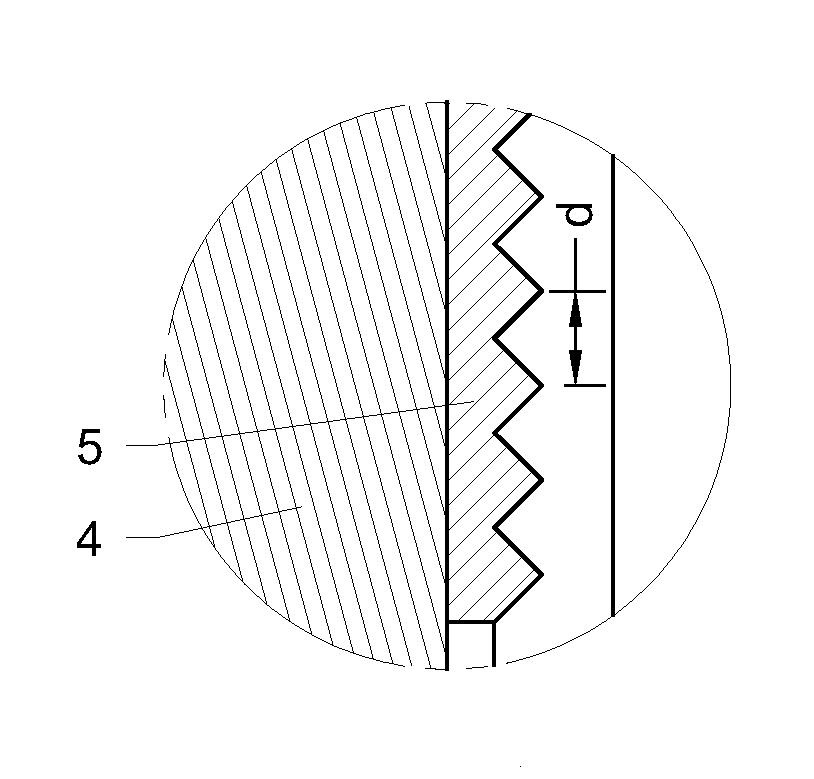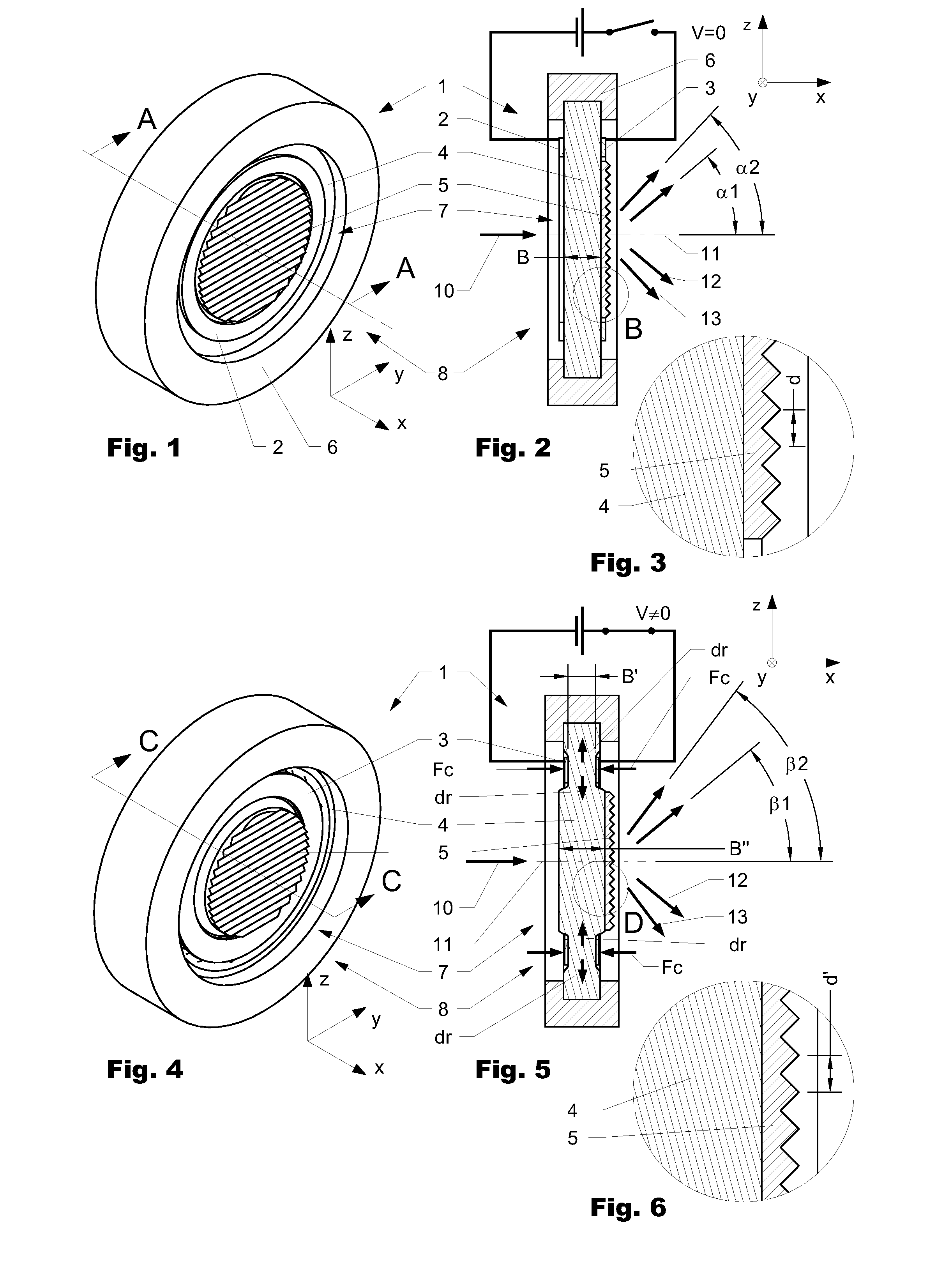Tunable optical active elements
a technology of optical active elements and tunable elements, which is applied in the field of tunable optical active elements, can solve the problems of difficult implementation of expensive mechanical systems, limited tuning range or many expensive production steps, and inability to change the shape of gratings, etc., and achieves large tuning range, low cost, and linear strain in grating period direction.
- Summary
- Abstract
- Description
- Claims
- Application Information
AI Technical Summary
Benefits of technology
Problems solved by technology
Method used
Image
Examples
Embodiment Construction
[0091]FIG. 1 through FIG. 6 are schematically showing a first embodiment of an optical element 1 according to the present invention, here a translucent tunable diffraction grating 1. While FIG. 1 is showing the diffraction grating 1 in an undeformed state, FIG. 4 is showing the same diffraction grating 1 in a deformed state. FIG. 2 is showing a cross-section along xz-plane through the centre of the diffraction grating according to FIG. 1 along line AA. FIG. 5 is showing a cross-section along xz-plane through the center of the diffraction grating according to FIG. 4 along line CC. FIG. 3 is showing detail B of FIG. 2 and FIG. 6 is showing detail D of FIG. 5.
[0092]The diffraction grating 1 comprises an upper and a lower electrode 2, 3 which encompass a translucent intermediate layer 4 and an optically active grating area 5. The electrodes 2, 3 act as driving plates of a driving means 15 to locally compress the intermediate layer 4 in a controlled manner. In the herein shown embodiment...
PUM
 Login to View More
Login to View More Abstract
Description
Claims
Application Information
 Login to View More
Login to View More - R&D
- Intellectual Property
- Life Sciences
- Materials
- Tech Scout
- Unparalleled Data Quality
- Higher Quality Content
- 60% Fewer Hallucinations
Browse by: Latest US Patents, China's latest patents, Technical Efficacy Thesaurus, Application Domain, Technology Topic, Popular Technical Reports.
© 2025 PatSnap. All rights reserved.Legal|Privacy policy|Modern Slavery Act Transparency Statement|Sitemap|About US| Contact US: help@patsnap.com



